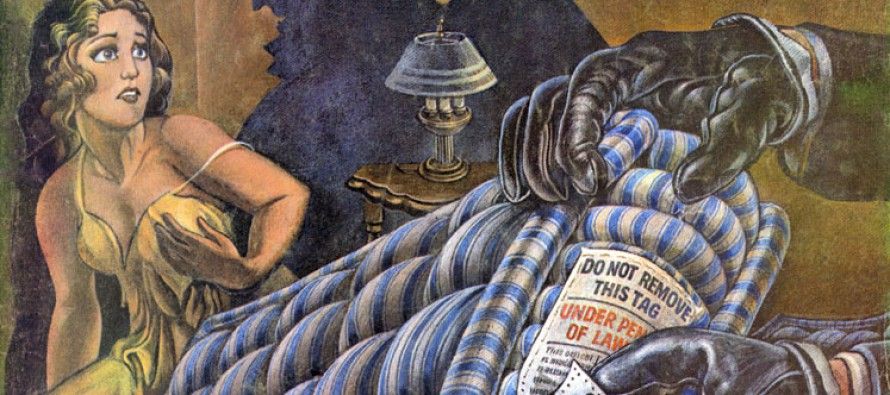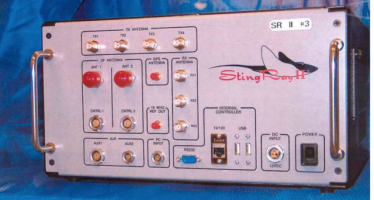Mattress manufacturers get out in front of proposed tax

Many still believe it’s a crime to remove the “Do Not Remove Under Penalty of Law” tag from a mattress. Chances are they would never illegally dump an old mattress either. But, in many areas of the state, illegally dumped mattresses are a problem — a big enough problem that the Legislature is now addressing it.
 SB 254 by Sen. Loni Hancock, D-Berkeley, and Sen. Lou Correa, D-Santa Ana, would mandate mattress manufacturers to pay the entire cost of mattress recycling — a cost which would undoubtedly be tacked on to the price of a new mattress. It has already been passed by the Senate and will be heard in the Assembly Natural Resources Committee on Monday.
SB 254 by Sen. Loni Hancock, D-Berkeley, and Sen. Lou Correa, D-Santa Ana, would mandate mattress manufacturers to pay the entire cost of mattress recycling — a cost which would undoubtedly be tacked on to the price of a new mattress. It has already been passed by the Senate and will be heard in the Assembly Natural Resources Committee on Monday.
The bill would require mattress manufacturers to organize, operate and pay for all mattress recycling in the state. “Illegally dumped mattresses are a terrible blight on our communities,” Hancock said in a press release. “They not only deface a neighborhood but they can become a health hazard and a breeding ground for mold and pests. Cash-strapped cities are forced to spend hundreds of thousands of dollars collecting and disposing of abandoned mattresses. That’s money that could be better spent on police and other vital services for the community.”
But it’s already illegal to dump a mattress, isn’t it? Yes it is.
Hancock says that doesn’t mean the problem of mattress dumping isn’t real. And while she acknowledges that mattress recycling is a very labor-intensive and cost-prohibitive business, she maintains SB 254 will alleviate that.
Why are manufacturers held responsible? This is California
So why is the illegal dumping of old mattresses the responsibility of manufacturers? Old abandoned cars are not the responsibility of General Motors. Abandoned homes are not the responsibility of the builder.
Adding another fee to consumers is rarely a good option. But faced with the Democratic supermajority in the Legislature, which almost always seeks to impose mandates, regulations and additional costs on private sector businesses, mattress manufacturers chose to get out in front of the problem rather than wait to be regulated without any input. SB 254 could be a win-win, without actually costing Californians much more at checkout.
In an interview in April with Christopher Hudgins, with the International Sleep Products Association, he said there are several issues with old mattresses, besides the unsightly abandoned mattress street litter in some areas of the state. Faced with Hancock’s bill and a potential mandate, his association worked up an alternative solution.
Many mattress manufacturers already recycle old mattresses — the materials are highly recyclable. But it is expensive and labor-intensive, according to Hudgins. And some mattress manufacturers say they recycle the old mattresses, not by destroying them, but by selling them to a third party for refurbishment and eventual resale. The problem is, the old mattresses aren’t always refurbished properly prior to being sold again.
Mattress recycling could become much bigger business
There are currently eight locations which recycle mattresses in California. While the current process to dismantle and turn used mattresses into raw materials for reuse is arduous, this is the reason a fee is needed to offset these costs.
However, supporters of SB 254 believe as the recycling law is implemented, and the financial incentive is created, more recycling centers will open. Some will become more automated than others, supporters claim this will create jobs, while removing the burden of having used mattresses in our landfills, and diminishing the illegal dumping of used mattresses.
I asked Shelly Sullivan, the spokeswoman for Californians for Mattress Recycling, what this program will cost the state. Sullivan said the newly created organization would reimburse the state for appropriate oversight costs.
As for a mechanism to measure accountability, Sullivan said, “The organization’s activities will be transparent and open to public input, and subject to annual performance and financial audits that would be published on its website.”
What criteria will be used to measure the success of the program? “The state’s oversight authority would confirm whether the organization has met its statutory obligations,” Sullivan explained.
Mattress recycling organization would be non-profit
If enacted, SB 254 would create a non-profit mattress recycling organization made up of retailers and manufacturers whose duty would be to plan, implement, and administer a state system to collect discarded used mattresses, dismantle them and recycle their materials for use in new products.
According to the bill analysis, “This bill establishes the Used Mattress Recovery and Recycling Act (Act), which requires mattress manufacturers and retailers to develop a mattress stewardships program to increase the recovery and recycling of used mattresses to reduce illegal dumping.”
SB 254 would require mattress manufacturers to submit a recovery and recycling plan to CalRecycle by April 1, 2015. Consistent with existing state policy, the plans would have a goal of recycling at least 75 percent of used mattresses in California by Jan. 1, 2020.
Related Articles
Silicon Valley sheriffs push cellphone surveillance
It’s not just the immense amount of information collected by such tech giants as Apple, Google and Facebook that is
UC Berkeley deficit crisis threatens its long-term stability
Dramatically reopening what had seemed to be a settled matter, the University of California at Berkeley revealed plans for a sweeping spending reassessment
Is California a Donor State?
Feb. 10, 2010 By JOHN SEILER Ever since he began working on the California state budget for fiscal year 2010-11,




